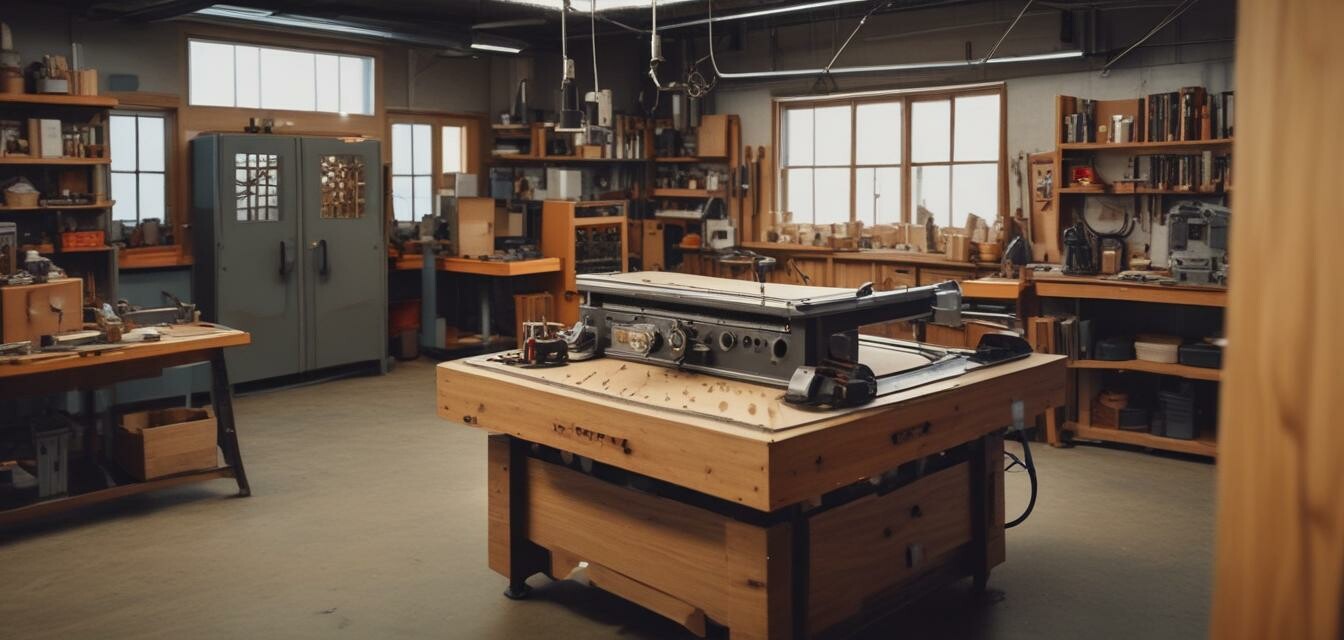
The Impact of Technology on Modern Woodworking
Key Takeaways
- Modern technology has greatly enhanced precision in woodworking.
- CNC machines allow for complex designs to be easily created.
- Laser cutters offer quick and intricate cuts, reducing manual labor.
- Software advancements have simplified project planning and design.
- Emerging technologies are making woodworking accessible to everyone, from hobbyists to professionals.
The woodworking industry has always adapted and grown through various innovations. Today, we stand at the brink of a technological evolution that is transforming how woodworkers operate, design, and create. From CNC machines to laser cutters, modern technologies are enhancing efficiency, precision, and creativity in woodworking. In this article, we will explore the impact of these technologies on modern woodworking and the benefits they bring to both professionals and enthusiasts alike.
Introduction to woodworking technology
Woodworking has traditionally been an artisanal craft, reliant on hand tools and skilled labor. However, with the advent of new technologies, the industry is undergoing a fundamental shift. Advanced tools and machines are allowing woodworkers to achieve new levels of precision and creativity. Let's delve deeper into how these modern technological advancements are reshaping the landscape of woodworking.
Types of technologies influencing woodworking
CNC Machines
CNC (Computer Numerical Control) machines have revolutionized woodworking. These machines can take a digital design and transform it into a physical product with high accuracy.
| Feature | Benefits |
|---|---|
| Precision Cutting | Allows for detailed and intricate designs that are hard to achieve by hand. |
| Consistency | Ensures each piece is identical, perfect for mass production. |
| Speed | Reduces the time it takes to complete a project significantly. |
Laser Cutters
Laser cutters work by directing a high-power laser beam onto the material, resulting in precise cuts, etching, and engraving.
- Fast production times
- Ability to cut complex shapes without the need for multiple tools
- Minimal waste due to accurate cutting
Software advancements
In addition to the hardware, software developments are making project planning and design easier than ever. Programs that allow for 3D modeling can help visualize projects before they are started, saving time and materials.
| Software | Features | Best for |
|---|---|---|
| SketchUp | 3D modeling, user-friendly interface | Beginners and intermediate users |
| Cabinet Vision | Specific for cabinet making, layout tools | Professional cabinet makers |
| Fusion 360 | Advanced CAD capabilities, CAM integration | Professional designers and engineers |
Benefits of integrating technology into woodworking
Integrating these modern technologies into woodworking practices brings numerous benefits:
- Increased Efficiency: Automating parts of the woodworking process allows for faster completion of projects.
- Enhanced Creativity: New tools enable woodworkers to experiment with designs that were previously too complex.
- Wider accessibility: Hobbyists can engage with woodworking at a new level, contributing to a growing community.
Staying updated with trends
For those interested in the latest trends and technological advancements in woodworking, it's important to stay informed. Regularly checking sources like woodworking blogs, forums, and social media can provide valuable insights into new tools and practices. Explore our News and Trends section for updates in the woodworking industry!
Pros
- Improved precision and quality of work
- Time-saving advancements in production
- Greater variety of designs and creativity in woodworking projects
Cons
- Cost of advanced machinery can be prohibitive
- Steep learning curve for new software and technologies
- Less hands-on experience, which may not be preferred by traditionalists
Conclusion
In conclusion, technology is playing an increasingly vital role in modern woodworking. From CNC machines and laser cutters to advanced design software, these innovations are enhancing productivity and creativity within the craft. As woodworkers, embracing these technologies can provide a competitive advantage and set the stage for future innovations in the field. Whether you're a seasoned professional or a novice woodworker, understanding and implementing new technologies can elevate your woodworking projects to new heights.
Tips for beginners
- Start with simple projects to get accustomed to new tools and techniques.
- Look for online tutorials to help you understand how to use software and machinery effectively.
- Join woodworking communities online to share your progress and learn from others.



